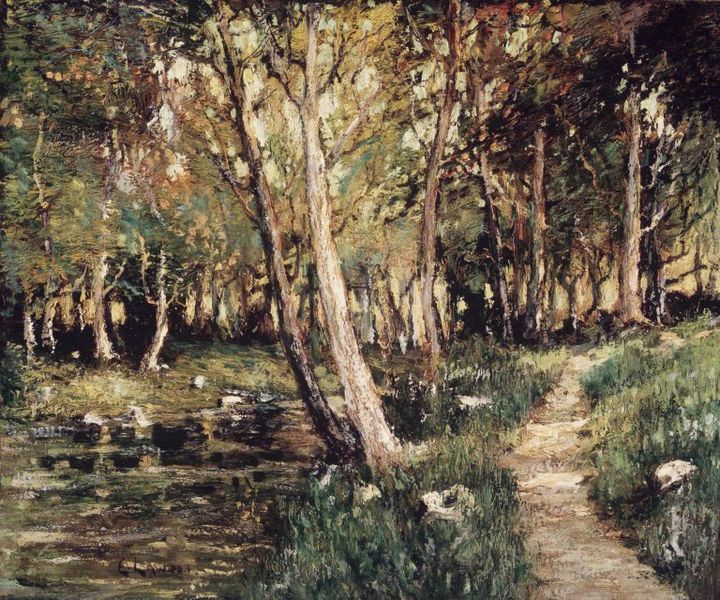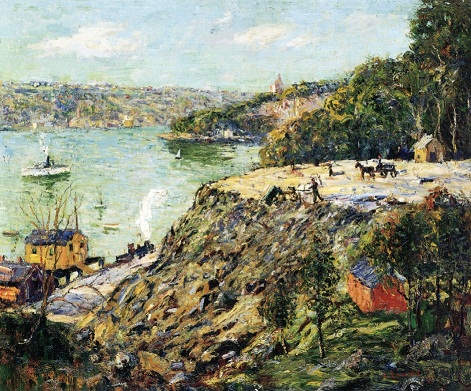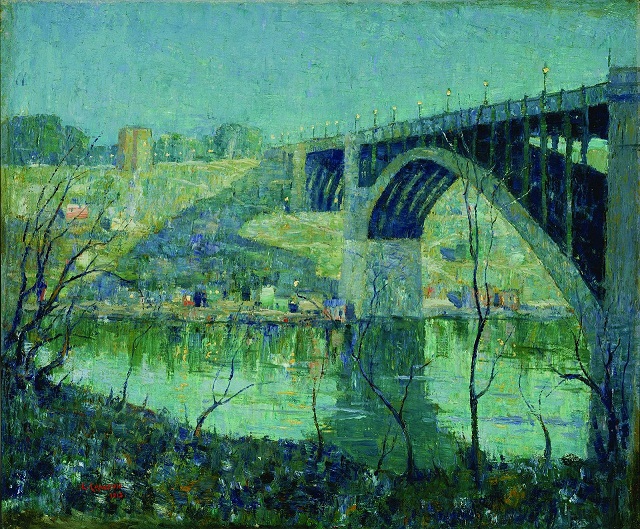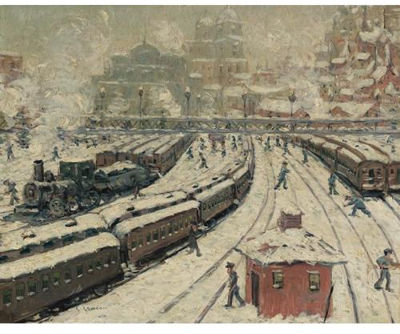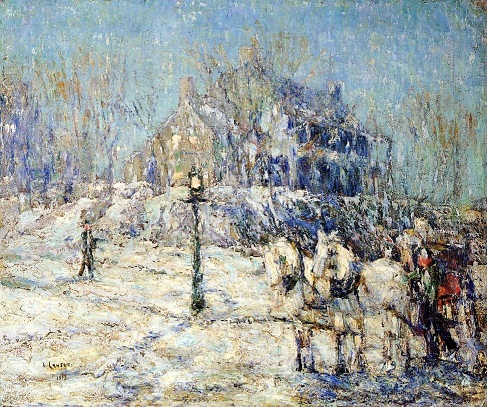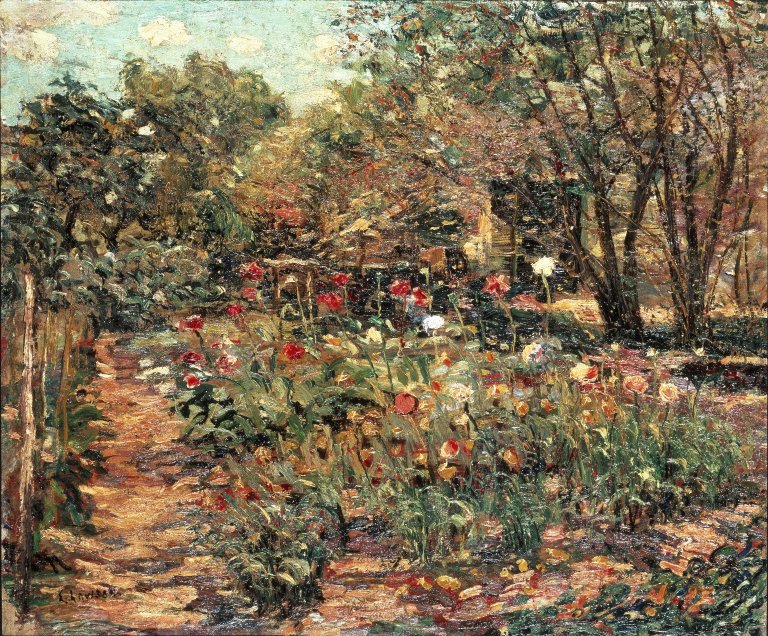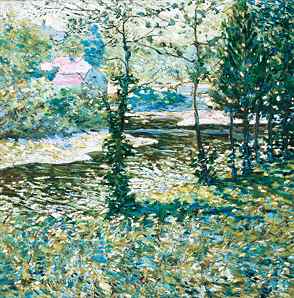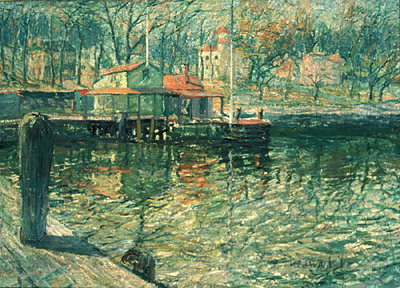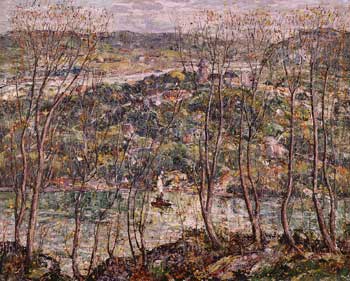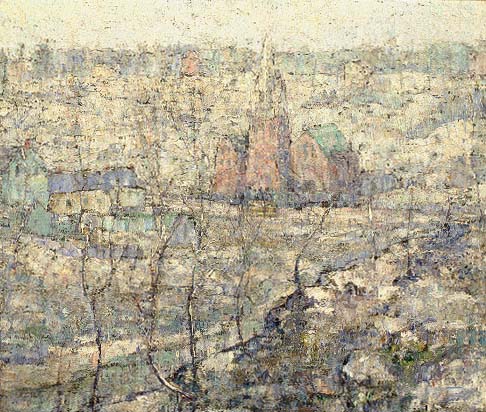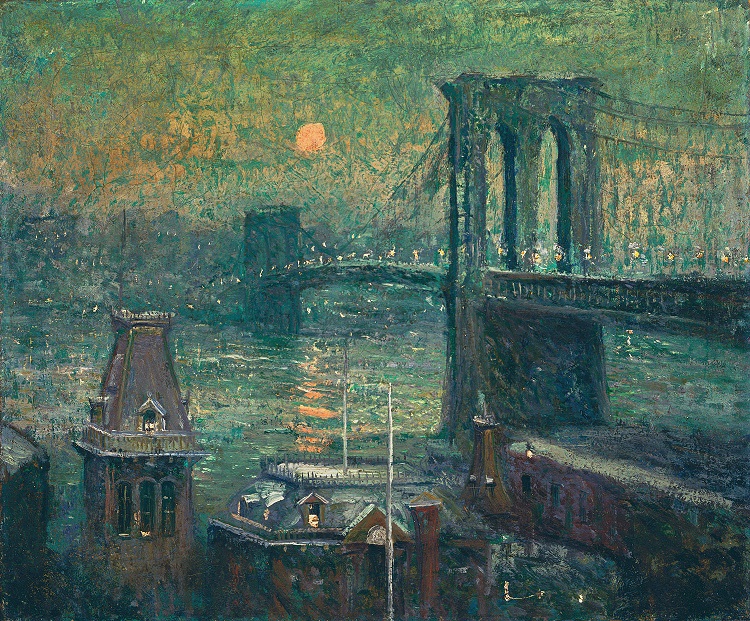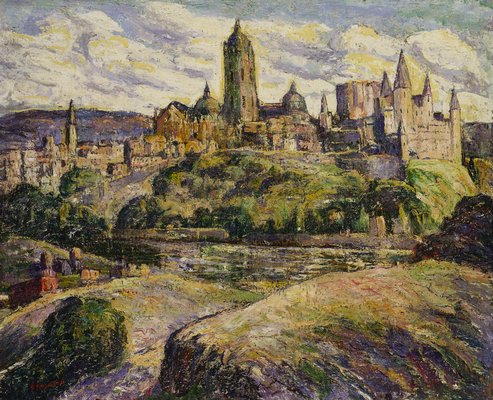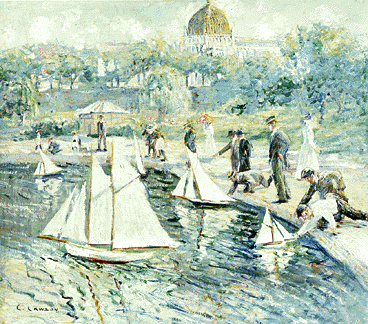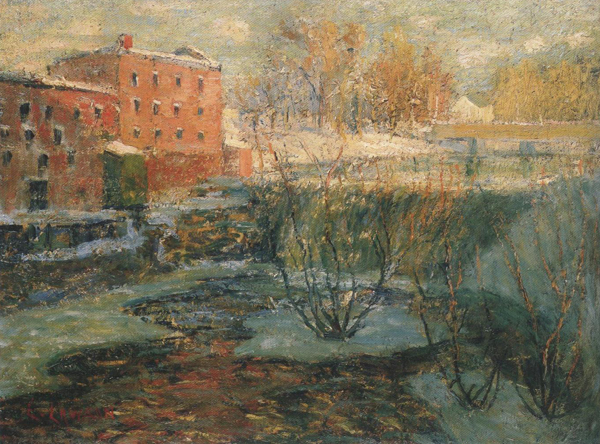<Back to Index>
- Painter Ernest Lawson, 1873
PAGE SPONSOR

Ernest Lawson (March 22, 1873 – December 18, 1939) was a Canadian - American painter and a member of The Eight, a group of artists which included the group's leaders Robert Henri, Everett Shinn, John Sloan, Arthur B. Davies, Maurice Prendergast, George Luks and William J. Glackens. Though Lawson mostly painted landscapes, he also did some realistic urban scenes which were shown at the 1908 exhibition of The Eight. His painting style is heavily influenced by Impressionism, especially the style of John Henry Twachtman, Alfred Sisley and J. Alden Weir.
Though considered an Impressionist, Lawson's work stylistically falls between Impressionism and realism. He became associated with Henri’s circle of insurgents and was included in the landmark 1908 independent exhibition of The Eight organized to protest the jury system of the National Academy of Design annuals, though he also became involved with the Academy and showed there throughout his life.
Lawson was born in 1873 in Halifax, Nova Scotia, and arrived in America in 1888 and settled in Kansas City. In 1891, he went to live in New York and soon enrolled in classes at the Art Students League with Twachtman, who was important to his formative years, in part by introducing him to Impressionism. He later continued to study with Twachtman at Cos Cob, Connecticut, and also was a student of J. Alden Weir at their art school, in the summer of 1892. Lawson visited France in 1893 and studied at the Académie Julian with Benjamin Constant and Jean - Paul Laurens. He practiced plein air painting in southern France and at Moret - sur - Loing, where he met the English Impressionist Alfred Sisley. In 1894, Lawson exhibited two paintings in the Salon. Lawson shared a Paris studio that year with W. Somerset Maugham, who is believed to have used Lawson as the inspiration for the character "Frederick Lawson" in his 1915 novel Of Human Bondage.
Upon his return to the States in 1896, he began formulating his own individualistic aesthetic. He was further encouraged by Henri and the other independent artists with whom he began to associate around 1903. Lawson moved to Washington Heights in Upper Manhattan in 1898, and his work for the next two decades focused on subjects of that area. Like other realists, he worked directly from the subject, and traveled with some frequency to other places that served as subjects of his art, including Spain, New Hampshire, Nova Scotia, Kansas, Colorado, Tennessee, New Mexico, Connecticut and Florida.
He had his first solo exhibition at the Pennsylvania Academy in 1907, and won a prize in the annual for a winter landscape, the theme which became his single most identifiable subject. The following year, he joined the group that would become known as The Eight (primarily through his friendship with William Glackens) in their defining show at the Macbeth Galleries. Also in 1908, he was named an associate of the National Academy, of which he was made a full academician in 1917. He contributed three paintings in the landmark 1913 Armory Show, and exhibited as a member of the Canadian Art Club from 1911 to 1915.
Lawson won many prizes throughout his career and was highly regarded by his peers. William Merritt Chase considered him America's greatest landscape painter. He had continual financial problems, however, as well as poor health in his later years.
Lawson first became acquainted with Florida when he befriended Katherine and Royce Powell, who became his close friends, supporters and patrons. Lawson first visited them in Coral Gables, Florida, in 1931, and he returned there often until permanently moving there in 1936. In his last years, he completed a post office mural in Short Hills, New Jersey (which is no longer extant), but primarily he focused on painting the Florida landscape. With his health in rapid decline, he drowned under mysterious circumstances while apparently swimming on Miami Beach, Florida, in 1939.
